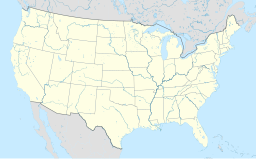Fort Hindman
| Arkansas Post National Memorial | |
| United States National Memorial | |
|
Arkansas Post, 1689
|
|
| Named for: Arkansea (French word for the Quapaw word meaning "land of downriver people") | |
| Country | United States |
|---|---|
| State | Arkansas |
| Region | Arkansas Delta |
| County | Arkansas |
| City | Arkansas Post |
| Location | National Memorial |
| - coordinates | 34°1′8″N 91°20′56″W / 34.01889°N 91.34889°WCoordinates: 34°1′8″N 91°20′56″W / 34.01889°N 91.34889°W |
| Area | 757.51 acres (306.55 ha) |
| - federal | 663.91 acres (268.67 ha) |
| Biome | Swamp |
| Formed | July 6, 1960 |
| Management | National Park Service |
| Visitation | 37,127 |
| Address | 1741 Old Post Road Gillett, Arkansas |
| Website: Arkansas Post National Memorial | |
The Arkansas Post was the first European settlement in the lower Mississippi River Valley and present-day Arkansas when Henri de Tonti established it in 1686 as a French trading post on the banks of the lower Arkansas River. The French and Spanish traded with the Quapaw for years, and the post was of strategic value to the French, Spanish, and Americans. It was designated as the first capital of the Arkansas Territory in 1819, but lost that status to Little Rock in 1821. During the years of fur trading, Arkansas Post was protected by a series of forts. The forts and associated settlements were located at three known sites and possibly a fourth, as the waterfront area was prone to erosion and flooding.
The land encompassing the second (and fourth) Arkansas Post site (Red Bluff) was designated as a state park in 1929. In 1960 about 757.51-acre (306.55 ha) of land at the site was protected as a National Memorial and National Historic Landmark; it commemorates the history of several cultures and time periods: the Quapaw, the French settlers who inhabited the small entrepôt as the first Arkansans, Spanish rule, an American Revolutionary War skirmish in 1783, the first territorial capital of Arkansas, and an American Civil War battle in 1863.
Three archeological excavations have been conducted at the site, beginning in the 1950s. Experts say the most extensive cultural resources at the site are archeological, both for the 18th and 19th-century settlements, and the earlier Quapaw villages. Due to changes in the river and navigation measures, the water level has risen closer to the height of the bluffs, which used to be well above the river. The site is now considered low lying. Erosion and construction on the river have resulted in the remains of three of the historic forts being under water in the river channel.
...
Wikipedia



